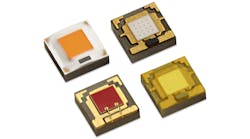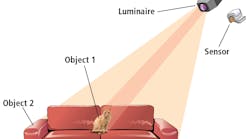While LEDs are now widely recognized as emerging light sources for general illumination, it turns out that LED lighting can also enable a broad range of life-science-centric applications. A new article in a medical journal has documented that LED lighting can enhance the rehabilitation process for patients that have suffered traumatic brain injury (TBI). LED lighting can improve skin condition and perhaps even provide vital vitamin D. Moreover UV LEDs can help detect cell necrosis.
The American Academy of Dermatology (AAD) has identified a number of uses for LED lighting in skin-related therapies. "LEDs are significant biologically because they can modify the function of mitochondria within cells,” said dermatologist Murad Alam, MD, FAAD, chief of the Section of Cutaneous Surgery and Aesthetic Surgery, and associate professor of dermatology, otolaryngology, and surgery at Northwestern University, Chicago. “This can have applications for dermatology, as LEDs may be able to improve wound healing by reducing inflammation, and improve sun-damaged skin by accelerating the growth of new collagen."
The narrow spectrum of LED lighting is important in some applications such as the treatment of acne. For example, the US Food and Drug Administration (FDA) has approved blue-light therapy in the 405-420-nm range for acne treatments.
"Although blue-light therapy is not as effective as oral antibiotics in clearing active acne, it appears to offer some degree of improvement for patients who are not good candidates for traditional acne therapies," said Dr. Alam. "However, in-office treatments must be administered up to three times per week to be effective." There are over-the-counter blue-light devices emerging for in-home treatments although Dr. Alam notes that they are less effective at least for now.
Medical researchers are also exploring LED-based red- and green-light therapies according to the AAD. Red light in the range of 600-950 nm can be used to treat acne, rosacea, and wrinkles. The red light works by stimulating the mitochondria in the skin that in turn cases older cells to behave like younger cells.
"When light of wavelengths in the range of 532 – 595 nm, or green to yellow, is used on the skin, it can reduce skin redness in some patients with age-related central facial redness and blood vessels, or rosacea," said Dr. Alam. "But future research is needed to explore light therapy in this area of dermatology."
Treating brain energy
It also appears self-administered LED-based light therapy can help patients recover from TBI. A new article published in the medical journal Photomedicine and Laser Surgery has documented improvements in two TBI patients that coincided with the light therapy.
The article “Self-administered light therapy may improve cognitive function after traumatic brain injury” may be difficult for anyone lacking a medical background to fully comprehend. But the website Medpage Today has a summary of the article on the LED light therapy that was vetted by a doctor, and that describes the findings simply.
Two patients with long-term cognitive impairments caused by TBI underwent four months of nightly treatment with LED lighting. Red, near-infrared LEDs were placed on the forehead and scalp. The patients showed improvements in cognitive ability after the treatment period. Moreover the patients regressed when the LED light therapy was discontinued – heightening the likelihood that the cognitive improvements were directly related to the LED lighting.
The primary author Margaret A. Naeser, PhD, of Boston University and her associates concluded, “Results from the two chronic TBI cases described here, along with those from previous [light therapy] studies with acute stroke patients and chronic, major depression cases, suggest that further, controlled research with this methodology is warranted. Transcranial red/near-infrared LED may be an inexpensive, noninvasive treatment, suitable for home treatments, to improve cognitive function in TBI patients, as well as to reduce symptom severity in post-traumatic stress disorder.”
Vitamin D synthesis and cytometry
The recent Strategies in Light Conference also featured a talk by Cary Eskow, the global director of Avnet Electronics’ LightSpeed business, that focused on emerging applications for ultraviolet (UV) LEDs, including several in the life-science area. According to Eskow, UV light causes the natural production of vitamin D3 in humans. So adding a UV LED in a luminaire could have direct health benefits.
Eskow also discussed the cytometry diagnosis procedure that is utilized to distinguish the natural cycle of cell death called apoptosis from cell death caused by toxins, trauma, or disease called necrosis. UV LEDs combined with fluorescent dyes administered to the patient enable fast and automated analysis that can save lives according to Eskow.
These life science applications have the potential to further expand the demand for LEDs. Even applications for UV or infrared (IR) LEDs that aren’t used in general-lighting applications create a positive synergy for LED makers. The manufacturers make those LEDs on the same fab lines used to make the blue emitters used to create white light and can increase fab utilization and ultimately lower component prices.




